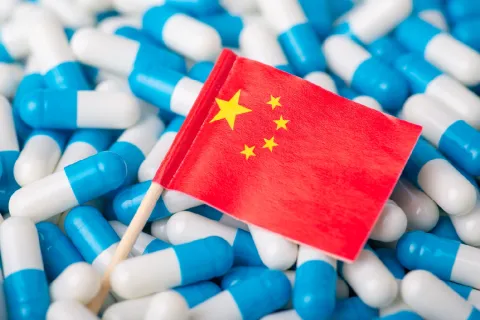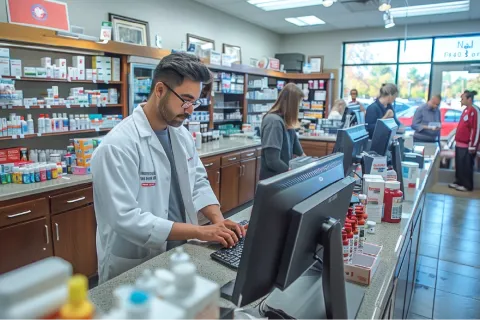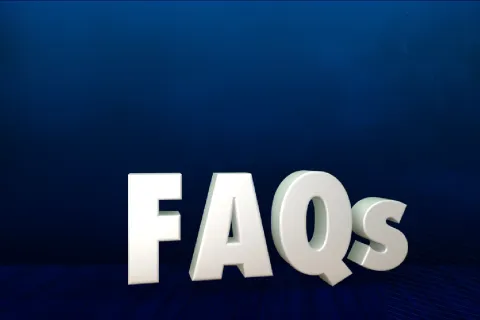
Supply chain challenges across the globe have laid bare the inefficiencies of the distribution system framework amidst the pandemic. Considering its enduring impact on the global pharmaceutical market, better operational structure and resilient operational framework are the basis for seamless manufacturing requirements in hindsight. For continents like Africa, ninety-six (96) % of their drug demand is fulfilled by importation, which collectively affects the availability of drugs (Onyango, 2021). As per reports published by a leading research organization, evaluation of the African pharmaceutical sector grew to $20.8 billion in 2013 from $4.7 billion earlier in the decade. However, as per the current evaluation, the continent’s pharma market is projected to reach a total of over $25 billion by 2022.
Keeping the current market trends in mind, Africa illustrates a substantial market opportunity for generics to prosper in the continent. As stated by an Editor-in-Chief at ‘Nigerian Journal of Pharmacy,’ the continent aspires to achieve end-to-end capability across pharmaceutical drug development from producing raw material to finished drug products. They aim to establish capabilities that deliver quality medicines from bench to bedside (Buckholtz, 2021). A business plan to improve pharma production and enhance public health outcomes was rolled out by the African Union Development Agency in 2005. However, government initiatives can further drive strategy into action as the ‘big pharma’ recognizes the latent potential of the African market.
Displaying the burden on current manufacturers, the continent comprises merely three hundred and seventy-five (375) drug manufacturers to serve a population of around 1.1 billion (Michael Conway, 2019). In contrast, countries like China and India, each with a population of around 1.4 billion, have five thousand (5,000) to ten thousand and five hundred (10,500) drug manufacturers (Buckholtz, ifc.org, 2017). Lack of drug manufacturers and exceptionally high demand for quality medicines build an opportunity for generic drug manufacturers to consider an entry into the African generic drug market. As a pioneer in an already saturated generic manufacturing market, enlisted factors can provide the right guidance in formulating strategies.
Targeted efforts on niche markets:
Africa represents fifty-four (54) distinctly different countries that vary in their population, market size, growth trajectory, and other macro-economic factors. Evaluating the market scope and gaps within different markets can help organizations better structure their operational requirements.
Local partnership and Associations:
Building teams with sales and marketing professionals that understand the local market and develop meaningful associations helps organizations navigate through local challenges. Sharpening the team’s skillset, hiring, and developing strong local managers to lead the team, etc., would account for another operational need.
Nurturing partnerships:
Locally present capabilities can provide support in the case of manufacturing, packaging, and distribution and basic functionality support across diverse markets. Mutually beneficial relationships among local entities facilitate global organizations to culturally integrate local values within the organization.
Identify unique perceived benefit:
Markets with extravagant potential for growth attract various organizations into the marketplace. However, due to clusters of companies aiming to achieve similar benefits, one size may not fit all. Organizations with a unique portfolio of services/products naturally stand out in a completive cluster. Hence, specific knowledge of points of difference can provide generic manufacturers with an upper hand.
Counterfeit drug preparations:
While exploring new markets as an organization, attention to Regulatory standards becomes primarily important since Africa suffers from forty-two (42) % of the world’s cases of counterfeit drugs (Millar, 2020). Structuring stringent guidelines for incoming manufacturers would ensure the quality of drugs being manufactured.
The African continent includes fifty-four (54) countries with varying beliefs and regulations. A unanimous approach towards building a resilient framework is paramount. Developing a viable market strategy with the prevalent challenges seems formidable. However, changing economic dynamics in Africa has focused population demand chronic care treatment, reflecting a shift in the market trend towards Non-Communicable Diseases (NCD) from the consistent impact of Human Immunodeficiency Virus/Acquired Immunodeficiency Virus in the content. Navigating through diverse business challenges over the past decade, industry players have established sustainable revenue-generation business operability.
Capturing considerable market share, innovative multinational organizations, Indian and Chinese pharmaceutical firms, and local manufacturers from North and South Africa govern the market dynamics. Local Regulatory presence in the continent can aid manufacturers to decipher guidelines and regulations released by the health agency. Can your organization pioneer in exploring the African market potential? Contact Freyr to know more.









